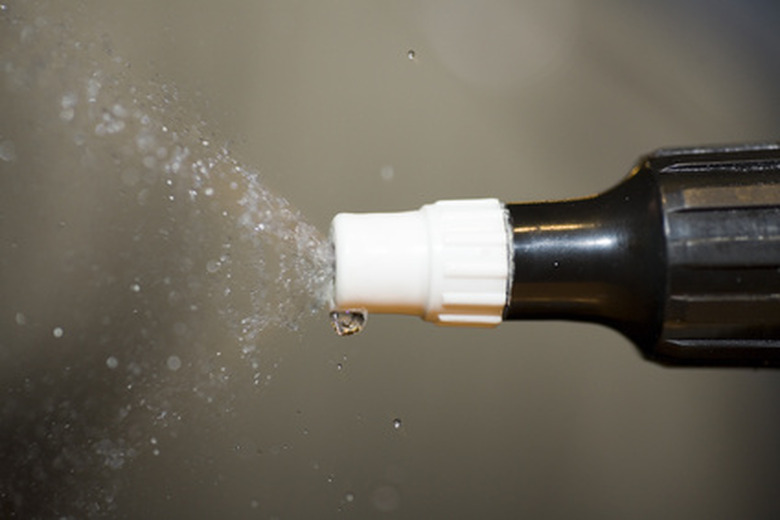The Parts Of Knapsack Sprayers
Knapsack sprayers have tanks of fertilizer, insecticide or herbicide that gardeners wear on their backs to spray gardens or trees. The gardener controls a nozzle with his right hand and a pump handle with his left hand to keep up the pressure in the tank. Knapsack sprayers are more convenient than the sprayers they replaced, which had to be carried by hand and set on the ground to pump.
The Tank
The Tank
Knapsack sprayers usually have 2 to 5 gallon tanks. These can really cut into your back with prolonged use. You can add Styrofoam (and duct tape) to make them fit more comfortably on shoulder bones and lower back. Sprayers should always be stored with a clean, empty tank. Fill the tank with plain water and spray it all out. This is especially important after using a herbicide (flush two times), because if your next use is insecticide the residue of herbicide can damage your plants. Never use chlorine or Clorox as this will damage the mechanism. Always mix dry ingredients before putting the mixture in the tank (do not mix in tank) by putting half the water in a container, then the dry ingredients, then the rest of the water. For liquid active ingredients, put the water in the tank first then add the liquid.
The Nozzle
The Nozzle
The nozzle tip forms the spray pattern. The tip is one of several components that screw into each other at the end of the spray wand. Most sprayers come with multiple tips–one for spraying narrow streams and another for spraying wide streams. There are also adjustable tips (mist to steady stream) and connections (called booms) that have multiple nozzles for spraying between several rows at once. In the tip assembly there is also a screen that should be cleaned occasionally. The screen is located near the interchangeable tips. Unless you are using a variable nozzle or a boom, the typical tip delivers 0.3 to 0.5 gallons per minute.
The Pump
The Pump
It is necessary to keep pressure in the tank so the liquid in the tank will spray out when the trigger is pulled. You should pump the handle 10 to 15 times when starting out and once every 5 seconds while working. Check the pressure gauge the first few times you use the system to be sure you have the rhythm of pumping that keeps the pressure steady. The pressure gauge (and the release valve and the cap on the top of the tank) should be kept oiled so that the seals are solid. Otherwise you will lose pressure. The normal pumping rate (when walking 4 feet per second) is a little over 15 gallons per acre for a spray width of 3 feet and a 0.3 gallon per minute tip, or a 6-foot spray width and a 0.5 gallon per minute tip, if the pressure is consistent.
